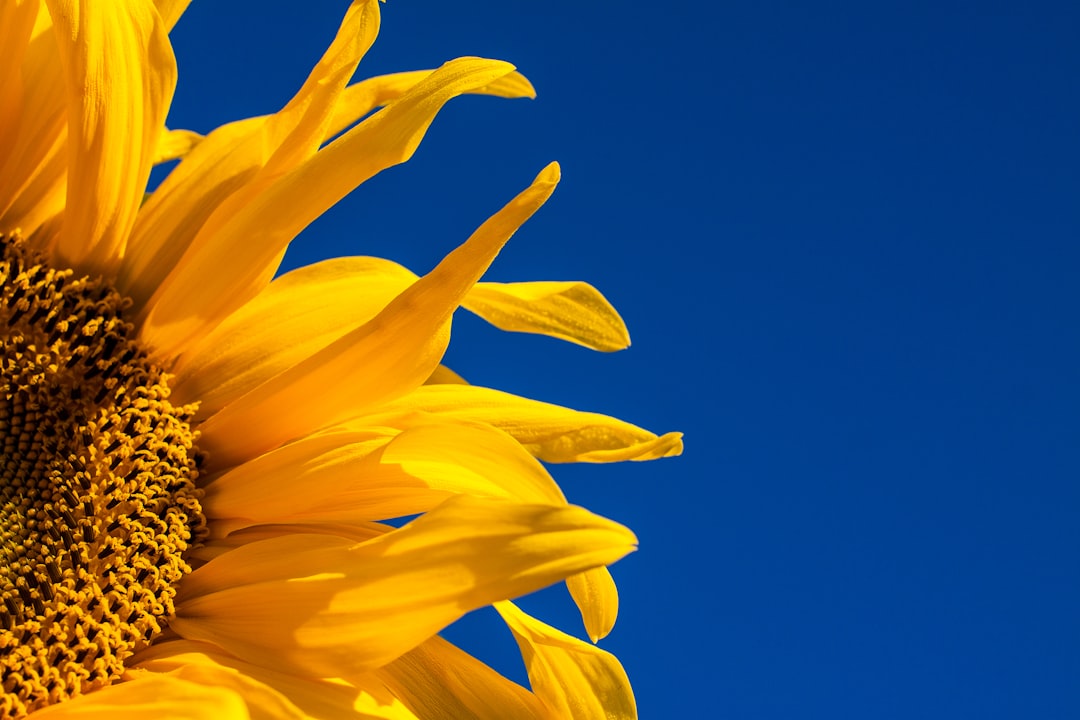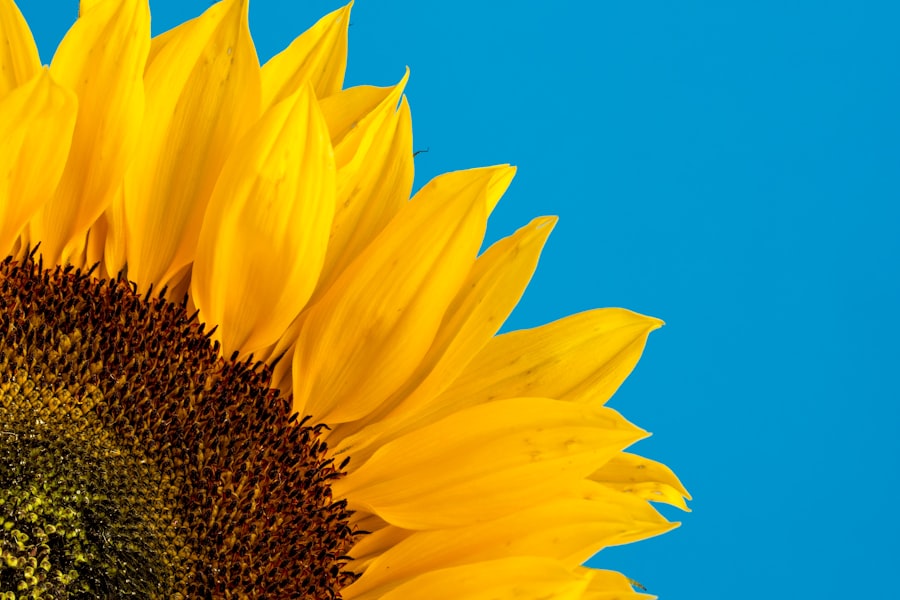Growing Sunflowers: Planting Seedlings 101

Sunflowers are not only beautiful and vibrant flowers, but they also have a variety of uses. Whether you want to grow them for their seeds or simply enjoy their stunning blooms, it is important to choose the right sunflower seeds and plant them correctly. By selecting the appropriate seeds and providing them with the proper care, you can ensure that your sunflowers thrive and bring joy to your garden.
Choosing the Right Sunflower Seeds for Planting
When choosing sunflower seeds for planting, there are several factors to consider. First, you need to decide whether you want to grow sunflowers for their seeds or for their flowers. If you are interested in harvesting the seeds, look for varieties that are specifically bred for this purpose, such as the Mammoth Russian or the Black Oil sunflower. These varieties produce large, plump seeds that are perfect for snacking or using in recipes.
If you are more interested in growing sunflowers for their beautiful blooms, there are a wide variety of options available. Some popular choices include the Teddy Bear sunflower, which produces fluffy, double blooms, and the Autumn Beauty sunflower, which features a mix of vibrant colors.
Preparing the Soil for Sunflower Seedlings
Sunflowers thrive in well-drained soil that is rich in organic matter. Before planting your sunflower seedlings, it is important to prepare the soil properly. Start by removing any weeds or debris from the area where you plan to plant your sunflowers. Then, loosen the soil with a garden fork or tiller to a depth of about 12 inches.
Next, amend the soil with compost or well-rotted manure to improve its fertility and drainage. Spread a layer of compost or manure over the planting area and work it into the soil using a garden fork or tiller. This will help provide your sunflower seedlings with the nutrients they need to grow strong and healthy.
Tips for Starting Sunflower Seeds Indoors
| Tips for Starting Sunflower Seeds Indoors |
|---|
| 1. Choose the right container |
| 2. Use high-quality soil |
| 3. Provide adequate light |
| 4. Keep the soil moist |
| 5. Maintain proper temperature |
| 6. Fertilize regularly |
| 7. Transplant seedlings carefully |
While sunflowers can be directly sown into the garden, starting them indoors can give them a head start and increase their chances of success. To start sunflower seeds indoors, you will need seed trays or pots, seed starting mix, and a warm, sunny location.
Fill the seed trays or pots with seed starting mix, which is a lightweight soilless mix that provides good drainage. Moisten the mix with water before planting the seeds. Plant the sunflower seeds about 1 inch deep and cover them with a thin layer of seed starting mix.
Place the trays or pots in a warm location, such as near a sunny window or under grow lights. Keep the soil moist but not waterlogged, and within a week or two, you should see the sunflower seedlings emerge.
Timing Your Sunflower Seedling Planting
The best time to plant sunflower seedlings outdoors is after the danger of frost has passed and the soil has warmed up. In most regions, this is typically in late spring or early summer. However, it is important to consider your specific climate and growing conditions when timing your planting.
Sunflowers require warm soil to germinate and grow properly. If you plant them too early when the soil is still cold, they may not germinate or may grow slowly. On the other hand, if you wait too long to plant them, they may not have enough time to mature before the first frost in the fall.
Watering and Fertilizing Sunflower Seedlings

Proper watering is essential for the health and growth of sunflower seedlings. When watering sunflowers, it is important to keep the soil consistently moist but not waterlogged. Overwatering can lead to root rot and other problems, while underwatering can cause stunted growth and wilting.
To determine when to water your sunflower seedlings, check the moisture level of the soil by sticking your finger about an inch into the soil. If it feels dry at that depth, it is time to water. When watering, apply water directly to the base of the plants rather than overhead to avoid wetting the leaves, which can lead to disease.
In terms of fertilizing, sunflowers are relatively low-maintenance plants and do not require heavy feeding. However, you can give them a boost by applying a balanced fertilizer, such as a 10-10-10 or 14-14-14 formula, when planting and again when the plants are about 6 inches tall. Be sure to follow the instructions on the fertilizer package for proper application rates.
Transplanting Sunflower Seedlings to the Garden
Once your sunflower seedlings have grown to a height of about 6 inches and all danger of frost has passed, they are ready to be transplanted into the garden. Before transplanting, prepare the planting holes by digging a hole that is slightly larger than the root ball of the seedling.
Carefully remove the seedling from its container, being careful not to damage the roots. Place the seedling in the planting hole and backfill with soil, gently firming it around the base of the plant. Water thoroughly after transplanting to help settle the soil and reduce transplant shock.
Protecting Sunflower Seedlings from Pests and Diseases
Sunflower seedlings can be susceptible to a variety of pests and diseases, including aphids, slugs, and powdery mildew. To prevent pest and disease problems, it is important to practice good garden hygiene and monitor your plants regularly.
Remove any weeds or debris from around your sunflower seedlings, as these can harbor pests and diseases. Inspect your plants regularly for signs of pests or disease, such as yellowing leaves or distorted growth. If you notice any problems, take action immediately to prevent further damage.
There are several organic methods you can use to control pests and diseases on sunflower seedlings. For example, you can handpick pests like aphids or use a strong stream of water to wash them off the plants. You can also use organic insecticidal soaps or neem oil to control pests. To prevent powdery mildew, avoid overhead watering and provide good air circulation around your plants.
Supporting Sunflower Stalks as They Grow
As sunflowers grow, their stalks can become quite tall and heavy, making them prone to bending or breaking in strong winds. To prevent this, it is important to provide support for your sunflower stalks.
There are several methods you can use to support sunflower stalks. One common method is to insert stakes into the ground near the base of the plants and tie the stalks to the stakes using soft twine or plant ties. Another option is to use a trellis or a fence as a support structure for your sunflowers.
When supporting sunflower stalks, it is important to do so early in the growing season before the plants become too tall and heavy. Be sure to tie the stalks loosely to allow for growth and movement, but tight enough to provide support.
Harvesting Sunflowers for Seeds or Flowers
The best time to harvest sunflowers depends on whether you are growing them for their seeds or their flowers. If you are growing sunflowers for their seeds, you will need to wait until the flower heads have fully matured and the back of the flower head turns yellow or brown. The petals will also start to dry out and fall off.
To harvest sunflower seeds, cut the flower heads from the stalks using a sharp knife or pruning shears. Leave about 12 inches of stem attached to the flower head. Hang the flower heads upside down in a cool, dry location to dry for several weeks. Once the flower heads are completely dry, you can remove the seeds by rubbing them gently with your hands or by using a fork to loosen them.
If you are growing sunflowers for their flowers, you can harvest them when the petals are fully open and the flowers are at their peak. Cut the flowers from the stalks using a sharp knife or pruning shears and place them in a vase of water to enjoy their beauty.
Saving Sunflower Seeds for Next Year’s Planting
Saving sunflower seeds is a great way to ensure a continuous supply of sunflowers in your garden year after year. To save sunflower seeds, start by selecting healthy, mature flower heads with fully developed seeds. Cut the flower heads from the stalks and hang them upside down in a cool, dry location to dry for several weeks.
Once the flower heads are completely dry, remove the seeds by rubbing them gently with your hands or by using a fork to loosen them. Separate the seeds from any remaining plant material and store them in a cool, dry place in an airtight container until you are ready to plant them next year.
In conclusion, choosing the right sunflower seeds and planting them correctly is essential for successful sunflower gardening. By considering factors such as seed type, soil preparation, timing, watering and fertilizing, transplanting, pest and disease prevention, supporting stalks, harvesting, and saving seeds, you can ensure that your sunflowers thrive and bring beauty to your garden. So why not give it a try and enjoy the rewards of growing these magnificent flowers at home?



